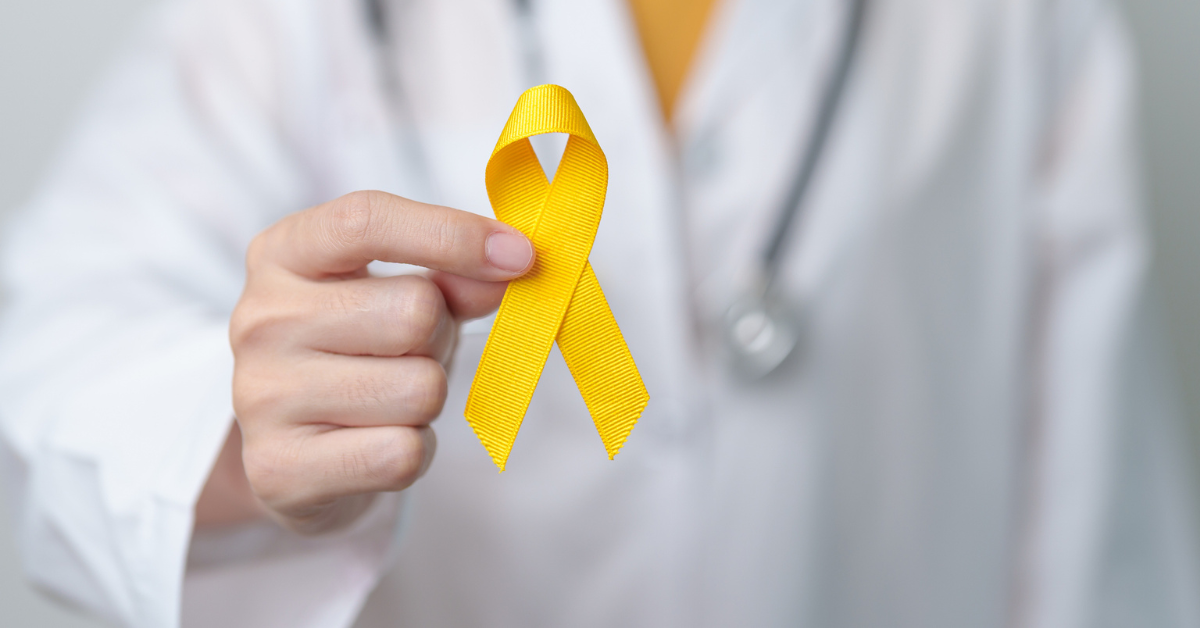
Recognizing Signs of Sarcomas
-
Found a lump? Don’t wait to get it checked.
A lot of us have lumps and bumps on our bodies. And while many are harmless, any new or growing lump or bump should be checked out, if for no other reason than peace of mind. Some lumps can be a sign of a rare type of cancer called sarcoma, which develops in bone or soft tissues.
Although relatively few people will be diagnosed with sarcoma in their lifetime, recognizing this disease is important for everyone. When sarcomas do develop, they can spread to other tissue or organs, if they’re not found and treated early enough.
Warning signs of sarcoma
There are two main categories of sarcoma, and they tend to have distinct symptoms. Sarcoma symptoms also vary depending on where in the body the cancer starts. Here’s what to know.
Soft-tissue sarcomas start in connective tissues, such as fat, muscle, nerves, tendons and blood vessels. There are about 100 different types of soft-tissue sarcoma, and they can develop anywhere in the body. The arms and legs are the most common sites, followed by sarcomas in the torso, belly, head and neck.
Often, the first sign of a soft-tissue sarcoma is a painless lump or mass. Along with the lump, swelling may occur in nearby tissues.
Sarcoma lumps can be confused with noncancerous masses, most commonly lipomas, which are made of fat cells, but there are some differences. Sarcomas are more likely to be firm to the touch. And, while lipomas rarely get larger over time, soft-tissue sarcomas do. While they’re usually painless at first, they may start to cause pain when they grow large enough to press on nerves or other tissues.
To be safe, ask your doctor about any lumps right away, especially if they’re:
- Growing.
- Painful.
- Larger than 2 inches.
Some soft-tissue sarcomas form inside the body, where a lump isn’t visible. In those cases, symptoms may not be noticeable. But sarcomas in the abdomen or GI tract may cause abdominal pain, a feeling of fullness or bloody stools.
Bone sarcomas. Most bone sarcomas are osteosarcomas. These sarcomas most often affect children and young adults. Osteosarcomas are most common around the knee or in the upper arm, although they can occur in other bones.
When sarcoma starts in an arm or leg bone, pain in the affected limb is often the first symptom. At first, the pain may come and go and be worse at night. Later, swelling near the tumor may occur.
Other signs and symptoms of a bone sarcoma may include:
- Joint swelling and stiffness.
- A limp.
- Fever.
- Weight loss.
What to do if you suspect sarcoma
It’s important to keep in mind that most lumps and bumps are not caused by sarcoma. And joint pain can have many causes, including growing pains. But if you’ve noticed a lump or other sarcoma symptom, let your doctor know. When it comes to sarcoma, getting a timely diagnosis—and starting treatment as soon as possible—can make a difference.
If your doctor suspects you might have sarcoma, you may need imaging tests and a biopsy to know for sure.
Treatment options for sarcoma can include surgery, radiation therapy and chemotherapy. The right treatment depends on specific factors unique to each person’s situation, including the type of sarcoma and whether it has spread.
Expert care makes a difference
Sarcomas are rare, so seeking treatment—or a second opinion—from a sarcoma center of excellence like Fox Chase Cancer Center provides more treatment options and better outcomes. At Fox Chase, you’ll be evaluated and treated by an experienced sarcoma care team which consists of medical, radiation, orthopedic and surgical oncologists and radiology and pathologists with expertise in sarcoma.
Fox Chase is also home to the latest advances in sarcoma treatment, including isolated limb infusion. Fox Chase is one of only a few cancer centers nationwide to offer this minimally invasive procedure, which allows doctors to treat a sarcoma in a limb with high doses of chemotherapy drugs—while sparing the rest of the body. They can circulate chemo drugs only within the affected limb region by temporarily stopping its normal blood supply.
If you’ve been diagnosed with sarcoma or you’d like to have a lump or bump evaluated, you won’t have to wait for weeks. Fox Chase offers next-business-day appointments with sarcoma specialists. To get started, call 888-369-2427 or request an appointment online.
